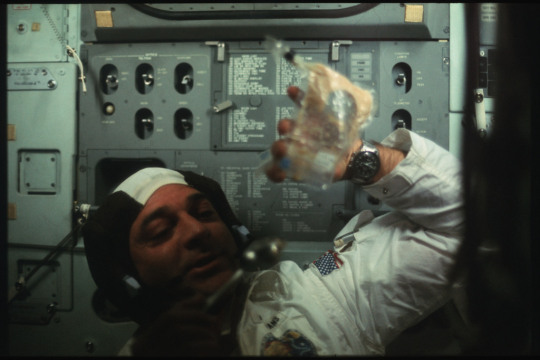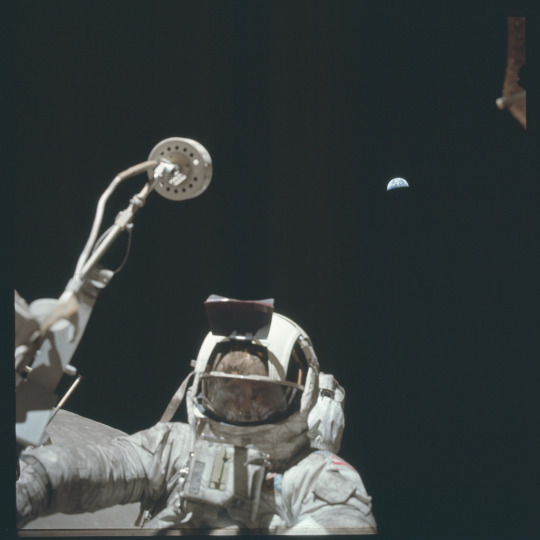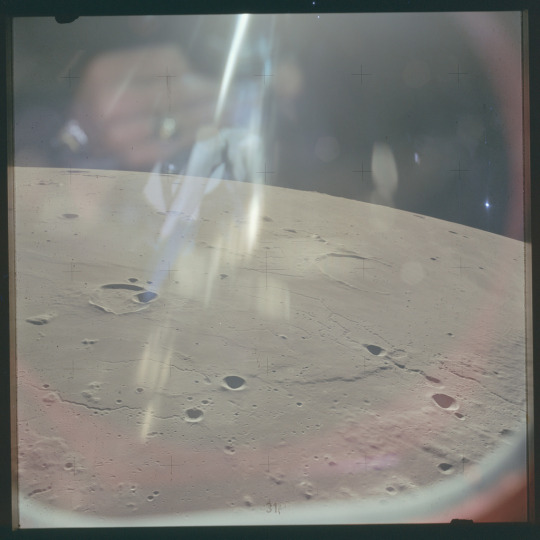College student working on Physics B.S and Mathematics B.S, but working on working out! Studyblr/Collegeblr. INTP & Ravenclaw
Don't wanna be here? Send us removal request.
Text
10 tips to increase your motivation for study
Motivation is one of the biggest issues for students and it is always great to find a few things that can keep you feeling inspired. Here are my top ten ideas:
start small - set yourself a challenge to work for five to ten minutes. Yes, just five minutes can be enough to get started! If you can get through that five minutes, you will start breaking down that feeling of disinterest and begin to get more into working. A fantastic application that will keep you from using your phone and on a time limit of between 10 minutes and two hours is Forest! However, here are some free alternatives.
plan tomorrow today - I find planning my day - or at least writing down a couple of tasks - before bed is extremely beneficial. In the morning I wake up with intent and get see my main priorities. They don’t have to full-fledged plans or written nicely in my planner but even just small reminders on a post-it note are enough for me to feel more organised.
give yourself a bit of structure - as mentioned, having a plan is a great way to start the day. You might use a planner, a bullet journal or a free printable from me to organise! Set yourself up with 3 key things to finish or do during the day. Give yourself a goal and a reward upon completion. Put time limits on tasks and use a schedule to stay on track.
utilise a studygram/studyblr - basically, the communities on Tumblr and Instagram act as amazing accountability partners! I am constantly motivated by my blog and being able to share my day to day life on Instagram or Snapchat. I definitely have become incredibly motivated and disciplined because of these two communities. If you’re thinking about starting a studyblr, read this. If you’re thinking about starting a studygram, read this. If you already have either, here is how you can use it to further motivate yourself!
set up an inspiring workplace - dedicating a space to work, and only work, is a great way to build a mindset of motivation which kicks in when you sit down. This Pinterest board has loads of inspiration for setups and organisation! You can also add a cute plant, a bright study lamp and some motivational printables for added encouragement!
externalise your short and long-term goals - by making a verbal or written commitment to your goals, you are much more likely to take steps to follow them through. You might want to have a really productive week catching up on all your work, improve your GPA or pass your semester with flying colours. At the start of each week think of the ways you can put your goals into actions. Then at the end of the week reflect on how you did. Track your progress and keep up your motivation by seeing things get a step closer each time!
listen to some music - putting on my favourite songs always put me in a better mindset and feeling more positive. Before a study session or during a break, I will sometimes put on a few songs I’m loving and take a moment to refocus.
don’t force it - if you’re feeling unmotivated to study, try doing something else for a short amount of time. Avoid things that could distract you like browsing Facebook or Instagram. Instead, try tidying your bedroom, organising your upcoming week, read a chapter of a book, or get a drink of water. Alternatively, make an action plan for what you need to do with your next few tasks. That way you’re still making progress with your work but aren’t sitting feeling too unmotivated to actually study.
find some inspiration - there is no shortage of amazing people with incredible stories of success! Podcasts such as The Daily Boost, The Tony Robbins Podcast and The School of Greatness are great examples. Ted Talks are often incredibly insightful and motivating! Search for quotes or stories from your favourite people!
change your mindset - one of the biggest challenges in motivation is adjusting your own perspective. For instance, instead of thinking “I am terrible at this” think “How can I learn this differently to really understand?”. “I made a mistake” think “What can I take away from making this mistake?”. “It isn’t perfect” think “These perfectionist tendencies are only making this more difficult, I can be content with my work”. Having a more positive outcome to each situation should help boost your confidence and motivation!
I hope these few tips are useful and help improve your motivation! If it helps, I would love to hear about it :-)
Other posts | Printables | Instagram | Youtube | Pinterest | Etsy Shop
12K notes
·
View notes
Text
“Read the best books first, or you may not have a chance to read them at all.”
— Henry David Thoreau, A Week on the Concord and Merrimack Rivers (via philosophybits)
1K notes
·
View notes
Photo

note-taking methods
guide to 4 main note-taking methods
cornell notes
outline method
how to mind map
how to use flashcards
how to use flashcards #2
cause and effect diagrams
summary foldables
double column method
revision notes
make your own revision textbook
how to take notes from a textbook
how to take notes for different subjects
in-class note-taking
taking notes in class
taking notes in class #2
note-taking during and after class
digital notes
ipad note-taking
onenote note-taking
onenote note-taking #2
making notes pretty
colour-coding notes
easy ways to make pretty notes
guide to aesthetically pleasing notes
upgrading your notes
helpful tags (for inspiration)
all notes
digital notes
flashcards
mind maps
printables
more posts:
apps for your mental health
aliexpress stationery
four types of learners
staying productive during holidays
maths masterpost
bullet journal spread themes
what’s in my bag
4K notes
·
View notes
Photo

But Why Did I Not Notice This Before?
603 notes
·
View notes
Text
What is at the center of our galaxy?
Here’s a very interesting question: What exactly is at the center of our galaxy? Is there a black hole ? How do we go about studying it?

A group of researchers from UCLA’s Galactic center group were inspired by the same question and decided to look at a region in the sky where they believed was the center of our milky way galaxy.
And this is what they found of the trajectories of stars surrounding the proposed center of the galaxy:

The star in the middle is the proposed center of our galaxy.These images were taken through the years 1996 - 2016 (see top right of gif).
The first thing that you notice about these stars is that they are orbiting a point in space. This is very similar of how planets in our solar system are orbiting the sun.

Source
One of the special stars in that animation is S0-2 which completes its elliptical orbit in only 15 years!
( it takes the sun approximately 225-250 million years to complete one journey around the galaxy’s center )

But having this knowledge of how small the orbit is, we can use Kepler’s law to find out the Mass at the center of the galaxy:

And we get the mass of the center as a staggering 4 million times the mass of the Sun.
Let’s take a look at the orbits once again:

The radius of this object at the center, in order to avoid collision with the rest of the objects has to be about the diameter of Uranus’s orbit.
So, an object that has 4 million times the mass of the Sun. and diameter of Uranus’s orbit .. Hmm.. The only astronomical object that would fit this characteristic is a Super Massive Black Hole (SMBH)
And that’s why we believe that at the center of our galaxy is a SMBH.

Hope you guys liked this post. Have a good one!
* This is how the actual data of the stars orbiting this apparent black hole looks like:

**(Lecture) Dr. Andrea M. Ghez “The Monster at the Heart of Our Galaxy”
*** (TED Talk) Andrea Ghez: The hunt for a supermassive black hole
All images/animations featured in this post were created by Prof. Andrea Ghez and her research team at UCLA and are from data sets obtained with the W. M. Keck Telescopes
1K notes
·
View notes
Photo

Pulsar map tattoo
Black pulsar map tattoo inked on the right upper arm
http://tattoogrid.net/pulsar-map-tattoo/
11 notes
·
View notes
Photo

In 1941, Swiss engineer George de Mestral noticed after a hunting trip that burrs from burdock plants stuck to his pants and his dog’s fur.
He took the seed and looked at them through a microscope to find that this seed attaches to animal fur via the hooks on its surface to improve distribution.

Source: All of Nature on Blogspot
These hooks would latch onto anything loop-shaped, such as the fibers in his pants and his dog’s tangled fur. This inspired him to come up with the ‘Velcro’.
Velcro is a bio-mimicry of this burrs with small flexible hooks attached on its surface to attach to fluffy surfaces.


Although it goes by the name Velcro the generic name is a hook-and-loop fastener)

And depending on the load that needs to be held there are different types of hooks that are available:

The sound that the velcro makes when you rip it apart is oddly satisfying. It is made when the loops are ripped apart from the hooks.
It was always in my head that the hooks or the loops would break whenever you would rip it apart. But turns out, they are extremely flexible.

Source
For a long time I believed that this was the end of the story and that’s how far we had gone. But recently when I was trying to mount a board to the wall, I came across the 3M dual lock fasteners.
These use a mushroom shaped hook on both the sides to snap together in place.


Source
And evidently it turns out the mushroom fastener design were inspired from dragonflies who used it for stability during mating (check source video above for more).
This is great, but since this is made of plastic this surely would fail at higher temperatures. You need something robust to handle higher temperatures, and this is where the Metaklett comes into the picture:

A square metre of this fastener, called Metaklett (made of steel), is capable of supporting 35 tonnes at temperatures up to 800 ºC, (Video)
There is something exotic in the blend of nature and technology that is manifested in the Velcro, I just cannot put my hand on what it is.
Have a great day!
24K notes
·
View notes
Photo

This is the visible spectrum of the light from the sun. And if you have played with white light and prisms before, it might come as a huge surprise to you to know that the spectrum from the sun is actually not continuous.

Why is it not ? The dark patches in the above spectrum arise from gas at or above the Sun’s surface absorbing sunlight emitted below.

Source
Since there are different types of gases that compose the sun, there are numerous wavelengths of light that get absorbed by these gases.

Source: xkcd
How do we know which line corresponds to which ? Well, it’s because we have a periodic table, and we know the spectrum of all the elements in it:

Source
And then it’s a matter of solving the jigsaw puzzle of fitting the spectrum with the tiles that you have. When we do so, we obtain the following composition of elements:

Source: Earth Blog
We can even take it one step further by finding the composition of other neighboring stars as well.

Source: Potsdam University
All of this information about the star can be captured from a simple spectrum. And this is why one of the most important tool that an astronomer has about an object is it’s spectrum.
Have a good one!
Edit: Added all sources for the images.
960 notes
·
View notes
Photo







Every Photo From NASA’s Apollo Missions Are Now on Flickr
The Project Apollo Archive uploaded more than 14,000 high-resolution images the astronauts took during NASA’s Apollo Missions of the 1960s and 70s. The collection includes every never-seen-before photo shot with the Hasselblad cameras on the lunar surface, from Earth and lunar orbit, as well as during the journey between the two. All the photos are unprocessed versions of the original scans. Image courtesy: NASA/JSC
90K notes
·
View notes
Text
Why is wavelength important than frequency ?
Whenever you see physicists talking about light, you might have noticed they prefer to use wavelength of the light rather than it’s frequency.



This is not a slip of the tongue and there is a very simple reason to it.
It is convenient to measure the wavelength of light experimentally rather than its frequency.
Take the violet light of wavelength 400nm. If we calculate it’s frequency, it turns out to be:

Why is this a problem?
Can’t we measure 7.5 x 10^14 Hz directly ?* There is a theorem by Nyquist in signal processing which states that:
The minimum rate at which a signal can be sampled without introducing errors, is twice the highest frequency present in the signal.
This means that if you want to measure the frequency of light accurately then you need to be sampling at 2*(7.5 x 10^14) Hz in order to measure it and this is incredibly hard to achieve this instrumentally!
Diffraction Grating
On the other hand, here is how easy it is to measure the wavelength of the light:
Take the source of light and pass it through a diffraction grating.

Measure the angle(theta) between the highest intensity (zero order) and say the ‘nth’ order. (see diagram above).
Use the following formula for the wavelength : **

where, d - distance between the slits (will be provided by manufacturer of diffraction slit), n - order of the slit, theta- from measurement.
And voila, you have the wavelength of the light. That’s how simple it is to get the wavelength of a source light. Since speed of light is a constant, the frequency of light is found out from the following relation:

In addition to this, you can also derive the energy of a photon using the relation:

And so on and so forth. All of these following from a simple diffraction experiment! That’s why calculating the wavelength of light is so crucial.
Have a good one!
* There are some indirect means to do this. Check this physicsforum page for more.
** How do diffraction gratings work ?
457 notes
·
View notes
Text
Maybe crickets have the exact opposite sense of humor to us, so whenever you hear crickets after a bad joke it’s just your tiny fan club absolutely dying with laughter
4K notes
·
View notes
Text
“One, remember to look up at the stars and not down at your feet. Two, never give up work. Work gives you meaning and purpose and life is empty without it. Three, if you are lucky enough to find love, remember it is there and don’t throw it away.”
—
Stephen Hawking, Advice He Gave His Children
World renowned physicist Stephen Hawking has died at the age of 76.
He died peacefully at his home in Cambridge in the early hours of Wednesday, his family said.
The Briton was known for his work with black holes and relativity, and wrote several popular science books including A Brief History of Time.
At the age of 22 Prof Hawking was given only a few years to live after being diagnosed with a rare form of motor neurone disease.
Rest in Peace, Stephen.
552 notes
·
View notes




